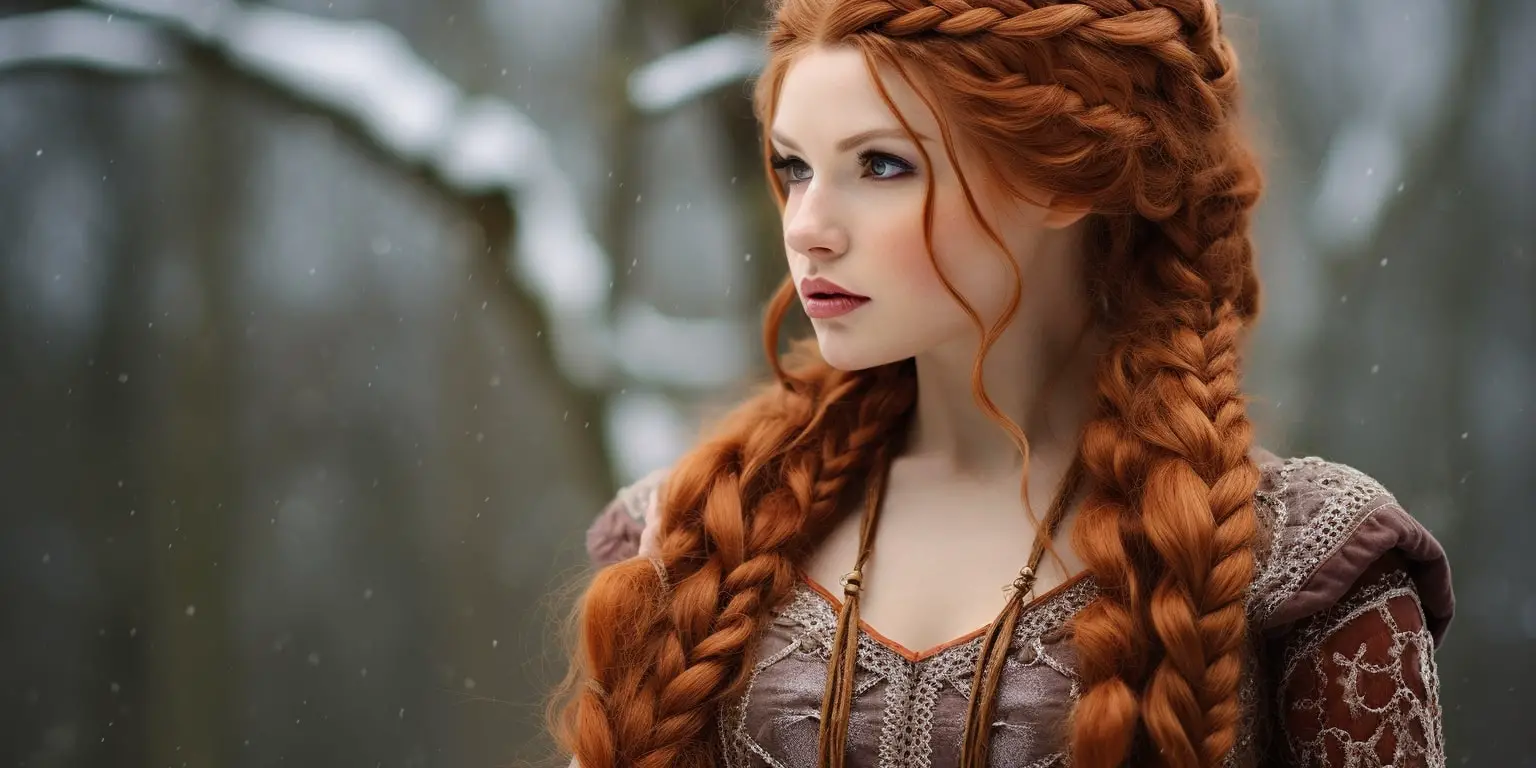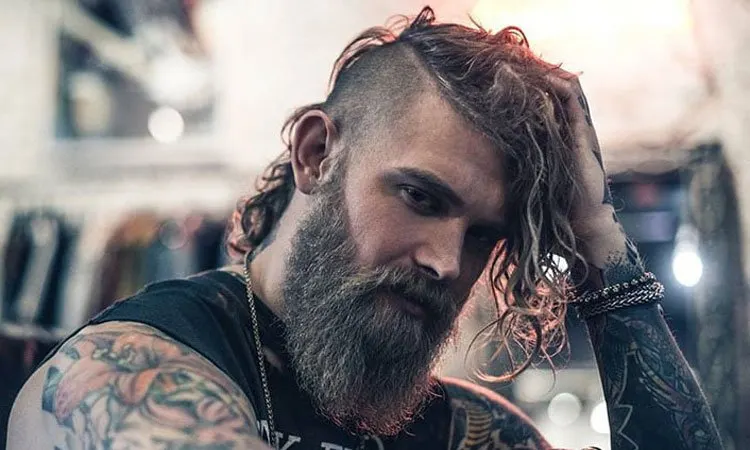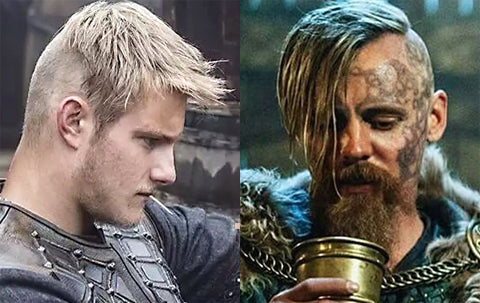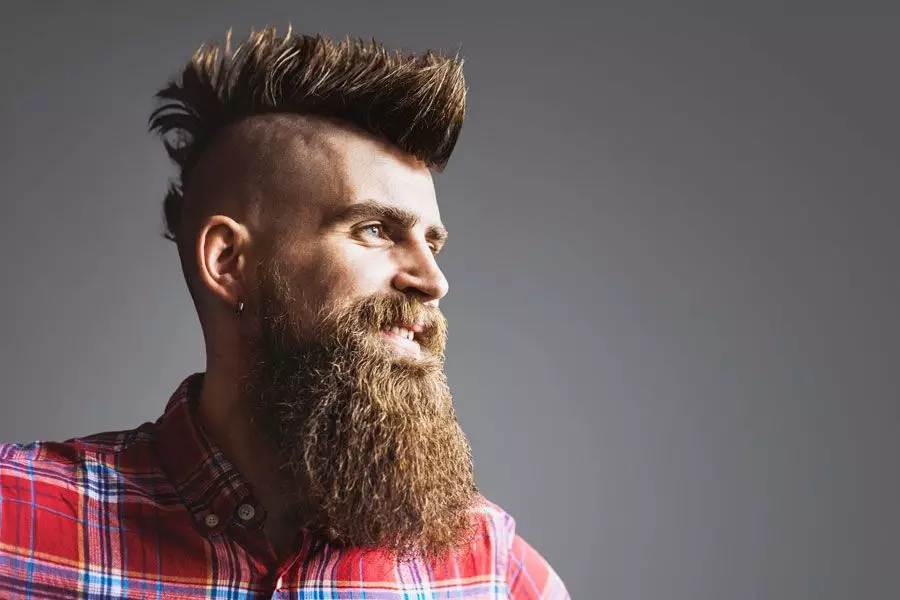Vikings came from an honor culture where individuals expressed their worth through actions, words, and appearance. Abundant jewelry, clothing, combs, and personal care items recovered by archaeologists show that personal presentation was of great importance in Viking societies. But while the Viking preoccupation with hair and grooming are well established, what their hair styles actually looked like is a surprisingly controversial topic. Since Vikings only left cremated or skeletal remains, and since the written material from the era is almost always sparse in detail, how can we really know what Vikings looked like? This article will examine the surviving evidence from the literary and archaeological record to render a more accurate portrait of the Viking hairstyles of 1000 years ago. And as we will cover below, these various accounts range from short hair to long hair, beardless to bearded, full head of hair to partially shaved heads.
The Viking Age (793-1066; or 750-1050, if you like the less Anglo-centric numbers) lasted around 300 years. Vikings traveled through what are now 40 different countries and interacted with 50 world cultures. At the apex of their influence, Vikings could be found from Newfoundland to Western Asia. Their trade networks were extensive, with goods and ideas passing between intrepid travelers over vast distances. There is strong historical and archaeological evidence that Vikings absorbed fashion and other material and intellectual properties from the peoples they interacted with and spread them to new peoples. Because of the Vikings, fashion trends from the east were felt in the west, and vice versa.
Because of this, when one speaks of “Viking hair style” it is foolish to think that this is a narrow spectrum of styles that never changed. To think that Vikings only had short hair or long hair, bowl cuts or “reverse mullets,” full beards or just mustaches or were clean shaven would all be a drastic oversimplification. Similarly, it is not on the side of accuracy to say “Vikings never had that hair style” when hundreds of thousands of Vikings lived over 10-15 generations throughout an immense spread around the world. Vikings were a varied and curious people who did not like to be limited.
Women’s Hair

In Viking society, women wore their hair long as a sign of status and to be appreciated for its beauty. Naturally, these hard-working women tied their hair back, braided it, or wore it up to keep it out of their way while they worked the loom or performed their other daily tasks. Sculptures, carvings, and other art show women wearing their hair long in the back, while the long locks of the front and sides are worn up in a bun or braided in a knot.
Did Viking Men have Long Hair or Short?

Numerous Roman writers comment on the long hair of “Northern barbarians,” but did the Vikings still wear their hair long like their ancestors (and the neighbors of their ancestors) did? In the Grágás medieval law codes of Iceland, there is the rule that women should not wear their hair short “like a man’s,” but “short” and “long” are always relative terms. In many ways, short hair is more practical for men on the move – one of the main reasons why most armed forces today insist on short hair. So, for insight into the question of Viking men’s hair length, we must rely on the artistic record.
Shaved and Partially Shaved Heads?

One of the rare written accounts of Viking hair styles comes from a surviving letter from one Englishman to his brother, upbraiding him for his adoption of Viking clothing and hair. “You dress yourself in the Danish fashion, with bald neck and blinded eyes.” This “bald neck and blinded eyes” is taken by many to mean a hairstyle where the back is shaved but the top is long (perhaps even with long bangs).
Viking Beards

Few things seem more synonymous with Vikings than beards! Of course, Vikings loved beards and were even known individually for their beards (such as Sygtrygg Silkenbeard and Sweyn Forkbeard). One of the kennings (poetic nicknames) for Thor was “Red Beard.” But not all Vikings grew their beards au naturel. In fact – some Vikings had no beards at all.
In one of the most popular Icelandic sagas (then and now), Njal’s Saga, the wise hero is slandered by his enemies for having no beard (with the insinuation that this casts doubt on his gender and sexuality). However, beardless Vikings are plentiful in both Norse and non-Norse art.
Vikings who had beards groomed them carefully. In the Eddic poem, Rigsthula, we read of the free-born landowner (the class that produced the most Vikings) “his beard was trimmed.” Similarly, in art we see beards trimmed and shaped. Sometimes we see goatees or even mustaches with no beard. It would appear that Vikings used as much freedom of expression in cultivating and grooming their facial hair as they did in everything else.
Conclusion
In summary, the study of Viking hairstyles unveils a diverse aspect of their culture, reflecting the complexity of Viking society from 793 to 1066. Driven by an honor culture, Vikings placed great importance on personal presentation, evident in archaeological finds. The Viking Age, marked by extensive travels and cultural interactions, led to a dynamic exchange of fashion trends.
Defining a singular "Viking hairstyle" proves challenging due to diverse styles across regions and time periods. Women adorned long hairstyles as a symbol of status, adapting practical styles for daily activities. The question of whether Viking men had long or short hair remains inconclusive, with practical considerations and artistic representations offering nuanced insights.
Rare written accounts hint at the possibility of shaved or partially shaved heads among Viking men. Despite the common association of beards with Vikings, not all wore them, emphasizing the society's embrace of individuality and freedom of expression.
In essence, Viking hairstyles were as varied as the people themselves, challenging stereotypes and emphasizing the need for a nuanced understanding of this intriguing historical period.

